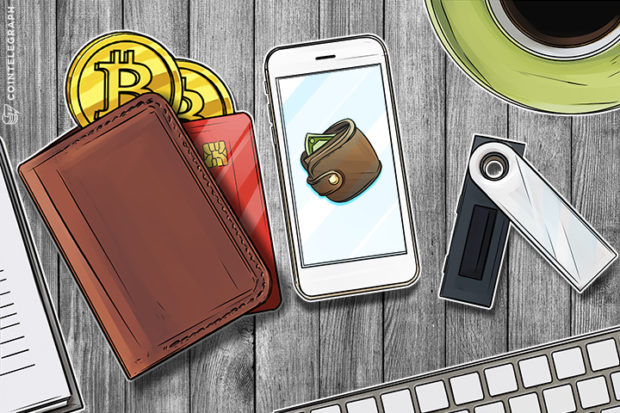Bitcoin definition
Bitcoin (BTC) is a digital currency, which is used and distributed electronically.
Bitcoin is a decentralised peer-to-peer network. No single institution or person controls it.
Bitcoins can’t be printed and their amount is very limited – only 21 mln Bitcoins can ever be created.
Who created Bitcoin?
Bitcoin was first introduced as an open-source software by an anonymous programmer, or a group of programmers, under the alias Satoshi Nakamoto in 2009. There has been a lot of rumours about the real identity of BTC’s creator, however all of the people mentioned in those rumours have publicly denied being Nakamoto.
Nakamoto himself once claimed to be a 37-year-old male living in Japan. However, because of his perfect English and his software not being labeled in Japanese, there are reasonable doubts about this. Around mid-2010, Nakamoto moved on to other things, leaving Bitcoin in the hands of a few prominent members of the BTC community. Also Satoshi named Gavin Andresen a lead developer.
It has been estimated that Nakamoto owns around one mln Bitcoins, which amounts to approximately $3.6 bln as of September 2017.
Who controls Bitcoin?
According to Gavin Andresen, the very first thing he focused on after Nakamoto moved on from the project was further decentralisation. Andersen wanted Bitcoin to continue its existence autonomously, even if he would ‘get hit by a bus’.
For a lot of people, the main advantage of Bitcoin is its independence from world governments, banks and corporations. Not one authority can interfere into BTC transactions, impose transaction fees or take people’s money away. Moreover, the Bitcoin movement is extremely transparent – every single transaction is being stored in a massive distributed public ledger called the Blockchain.
Essentially, while Bitcoin is not being controlled as a network, it gives its users total control over their finances.
How does Bitcoin work?
Behind the scenes, the Bitcoin network is sharing a public ledger called the “block chain”. This ledger contains every transaction ever processed. Digital records of transactions are combined into “blocks”.
If someone try to change just one letter or number in a block of transactions, it will also affect all of the following blocks. Due to it being a public ledger, the mistake or fraud attempt can be easily spotted and corrected by anyone.
User’s wallet can verify the validity of each transaction. The authenticity of each transaction is protected by digital signatures corresponding to the sending addresses.
Because of the verification process and depending on the trading platform, it may take a few minutes for a BTC transaction to be completed. The Bitcoin protocol is designed so that each block takes about 10 minutes to mine.

Characteristics of Bitcoin
Decentralised
One of Satoshi Nakamoto’s main objectives when creating Bitcoin was the network’s independence from any governing authorities. It is designed so that every person, business, as well as every machine involved in mining and transaction verification, becomes part of a vast network. Moreover, even if some part of the network goes down, the money will keep moving.
Anonymous
These days banks know virtually everything about their clients: credit history, addresses, phone numbers, spending habits and so on. It is all very different with Bitcoin, as the wallet doesn’t have to be linked to any personally identifying information. And while some people just simply don’t want their finances to be governed and tracked by any kind of an authority, others might argue that drug trade, terrorism and other illegal and dangerous activities will thrive in this relative anonymity.
Transparent
The anonymity of Bitcoin is only relative, as every single BTC transaction that ever happened is stored in the Blockchain. In theory, If your wallet address was publicly used, anyone can tell how much money is in it by carefully studying the blockchain ledger. However, tracing a particular Bitcoin address to a person is still nearly impossible.
Those who wish to stay anonymous with their transactions can take measures to stay under the radar. There are certain types of wallets that prioritise opaqueness and security, but the simplest measure would be to use multiple addresses and not transfer massive amounts of money to a single wallet.
Fast
The Bitcoin network processes payments almost instantaneously, it normally takes just a few minutes for someone on the other side of the world to receive the money, while normal bank transfers can take several days.
Non-repudiable
Once you send your Bitcoins to someone, there is no way of getting them back, unless the recipient would want to send them back to you. This ensures the reception of a payment, meaning that whoever you’re trading with can’t scam you by claiming that they never got the money.
What can I buy with Bitcoin?
Back in 2009, when Bitcoin was first introduced, it wasn’t very clear how and where you could spend it. Now, you can buy virtually everything. For example, giant companies like Microsoft and Dell accept payments in BTC for a variety of their products and digital content. You can fly with airlines such as AirBaltic and Air Lithuania, buy theatre tickets through UK’s Theatre Tickets Direct, get a few bottles of craft beer from Honest Brew, and so on.
Other options include paying for hotels and buying property, picking up bills in various bars and restaurants, joining a dating site, buying a gift card, placing a bet in an online-casino and donating for a good cause. There is also a flurry of diverse online marketplaces, trading in everything from illegal substances to high-end luxury items.
Bitcoin is a relatively new and quite complex form of payment, so it is only natural that the spending options are still limited, but every day more and more businesses – from small local coffee shops to industry giants – are accepting payments in BTC.
Moreover, due to its constantly fluctuating exchange rate, Bitcoin became a prime opportunity for investment. Despite still being an unstable and to some extent unrecognised currency, it became seven times more valuable over the last year, almost reaching a rate of $5000 for one BTC.
How to get Bitcoin?
The simplest way of getting Bitcoins is to buy them. Bitcoins are available from various exchanges, but you can also buy them directly from other people via marketplaces. They can be paid for with cash, credit and debit card transfers or even with other cryptocurrencies. But first, you’ll need a Bitcoin wallet.
There is a variety of options, but the main ones can be reduced to an online wallet and a software wallet on the hard drive of your computer. Neither option is completely safe, as a hard drive can become corrupted, while an online wallet might be prone to a hacker attack. There are also mobile wallets, which are very simplified due to an enormous storage capacity required to carry the entire Blockchain; dedicated devices called hardware wallets and paper wallets with two QR-codes that are not stored digitally anywhere, making them immune to standard cyber-attacks and hardware failures.
And, of course, there’s mining. Just a few years ago, anyone with a powerful enough computer could mine Bitcoins, but this is not the case anymore. The BTC’s ever-increasing popularity as well as its exchange rate caused big companies to step into the game armed to the teeth with mining-specific devices, hence why the difficulty and energy required to mine worthwhile amounts of Bitcoins has skyrocketed. What’s more, the amount of Bitcoins still to be mined decreases constantly and drastically.
Pros
Freedom
BTC was designed with freedom in mind. Most importantly, freedom from governing authorities controlling the transactions, imposing fees and being in charge of people’s money. When it comes to buying things, cryptocurrency became just as legitimate as flat currency in recent years, and considering the existence of numerous deep-web markets that only accept Bitcoins, you may be able to buy some things easier with BTC than with any other currency.
High portability
One of the distinct characteristics of money is portability, meaning it should be easy to carry and use. Since Bitcoin is completely digital, practically any sum of money can be carried on a flash drive, or even stored online.
Cryptocurrencies give people freedom to send and receive money with just a scan of a QR-code or a click of an online wallet. It takes little to no time, there are no outrageous fees and the money goes from person to person without any unnecessary intermediates; all you need is Internet access.
Choose your own commission
Another indisputable advantage of the Bitcoin network is a possibility of choosing the transaction fee amount, or choosing not to pay it at all. The transaction fee is received by the miner, after a new block is generated with a successful hash. Usually, the sender pays the full fee, while deducting this fee from the recipient could be considered an incomplete payment.
Transaction fees are completely voluntary and they serve as an incentive for the miners to make sure that the particular transaction will be included in the new block being generated. This incentive also works as an income source for the miners, often bringing them more money than the traditional mining would have, especially considering that the mining activity will stop completely in the future, when the limit of Bitcoins will be reached.
Thus, the cryptocurrency market asks users to chose between the cost and the waiting time. Higher transaction fee would mean quicker processing, while users without any time constraints can save money.
No PCI
PCI stands for Payment Card Industry and it denotes the debit, credit, prepaid, e-purse, ATM and POS cards and associated businesses. It consists of all the organisations that store, process and transmit cardholder data, there are strict security regulations in place and most major card brands are part of it.
While unified rules and regulations can be good for big companies, they might not be taking every person’s needs into consideration. When using Bitcoin, there is no need to comply with PCI standards, which can allow users to branch out into new markets, where credit cards are not available or the fraud levels are unacceptably high.
As a result, users get lower commissions, an opportunity to expand their markets and lower their administrative expenses.
Safety and Control
Bitcoin users are able to control their transactions; no one can withdraw money from your account without you knowing and agreeing to it, like sometimes happens with other ways of payment, and no one can steal your pay information from merchants.
BTC users can also protect their money with backup copies and encryption. Moreover, their identities and personal information are always protected, as none of it needs to be disclosed to make a payment.
Transparent and neutral
Every single transaction as well as every single bit of information about it is always available for everyone in the Blockchain, which can be checked and used in real time. The BTC protocol is encrypted, hence why no human being or an organisation can control or manipulate it. The network is decentralised, so no one will ever fully control it. This is why Bitcoin is always going to be neutral, transparent and predictable.
It can’t be counterfeited
One of the most popular ways of counterfeiting in the digital world is using the same money twice, rendering both transactions fraudulent. It is called a ‘double spend’. To counter this, Bitcoin, just like most other cryptocurrencies, uses Blockchain technology as well as the various consensus mechanisms built into all BTC algorithms.
Cons
Legal questions
Bitcoin’s legal status varies drastically from country to country. In some countries the use and trade of BTC is encouraged, while in others it is banned and outlawed.
There has been a lot of concerns regarding Bitcoin’s appeal to criminals, some news outlets have even stated that its popularity rests entirely on the ability to spend it on illegal goods. Indeed, when the infamous web black market Silk Road was shut down, Bitcoin instantly decreased in value (wired.com).
Level of recognition
Bitcoin is recognised and is perfectly legal in a lot of countries, however some of the world’s governments still don’t have any regulations regarding BTC, while others have outright banned it.
The majority of businesses, no matter how big or small, are still completely oblivious to it. It is nearly impossible to abandon all other currencies and start using BTC exclusively.
Lost keys
A key is a unique alphanumeric password necessary to access a Bitcoin wallet. Losing that key essentially means losing your wallet. However, most current wallets have backup and restore mechanisms, but obviously the user needs to set them up before being able to use them.
Volatility
The price of Bitcoins has had its ups and downs, going through various cycles of skyrocketing and plummeting, referred to by some as bubbles and busts. Throughout its history BTC has been conquering new heights, only to sustain a massive drop straight after. Its value is unpredictable, it changes rapidly and drastically, which can cause significant financial damage to an imprudent investor.
Continuous development
The future of Bitcoin is rather unclear. Currently, governments and banks are not able to control BTC, it’s almost unregulated. However, the bigger and more popular it gets, the more world governments will try to take it under control. A regulated and governed Bitcoin would be an entirely different sort of currency.
Is Bitcoin a pyramid scheme?
A billionaire investor Howard Marks has recently stated that digital currencies are nothing but a pyramid scheme. He elaborated saying that the current success of digital currencies is based on nothing but willingness to ascribe value to something that actually has no value beyond what people will pay for it (cointelegraph).
Those investing in a pyramid scheme get their returns from their own money or from subsequent investors’ money, instead of from profit made by the individuals running the business. When it comes to Bitcoin, however, the gains and its value come from limited supply of coins. As more people acquire the coins, the supply gets rarer, thus making each coin more and more valuable. Bitcoin simply has nothing in common with a standard pyramid scheme.
Is Bitcoin a bubble?
Robert Shiller, a Nobel Prize winning economist, proposed a checklist which helps determine if something is a bubble. Said checklist includes sharp increases in the price of an asset, great public excitement, media frenzy, stories of people getting rich and growing interest in the asset among the general public. Bitcoin checks all of those boxes.
So, in a way, Bitcoin is a bubble and it has burst before. After the infamous closure of Mt.Gox, a Chinese exchange that was handling more than 70% of all the Bitcoin transactions worldwide, BTC’s prices were falling for about a year and a half. It took the prices exactly 3 years to recover. Of course, it is hard to predict what will happen in the future and there is a possibility of Bitcoin’s prices plummeting again. However, Bitcoin has recovered before and it is currently stronger than it ever was.
Difference of Bitcoin from traditional currencies
Decentralisation
Every currency in the world, apart from cryptocurrencies, is governed by some kind of authority. Every transaction goes through a bank, where people are charged enormous fees, and it normally takes a long time for money to reach the recipient.
Bitcoin, on the other hand, is not controlled by anyone. It’s a decentralised network and it’s built on the cooperation and communication of all the people taking part in it. Because of that, even if some part of the network goes offline, transactions will still be coming through.
It can’t be counterfeited
Bitcoin was designed as a currency that can withstand counterfeiting attempts. The legitimacy of BTC is ensured by the Blockchain technology, as well as by various different defence mechanisms built into every algorithm.
Most other traditional currencies are extremely prone to counterfeiting and those who control them seem to be doing close to nothing to fix it.
Durability
Bitcoins don’t exist in physical form, which means they cannot be damaged. Every single Bitcoin is essentially eternal, unlike paper money or coins.
Once sent, cryptocurrencies can’t be recalled
If someone makes a mistake and sends money to the wrong wallet and wishes to get it back, they can’t. Like many other Bitcoin features, this was done in order to prevent fraud. Unfortunately, when it comes to traditional currencies, most transactions can be recalled, all it takes is one phone call.
Fungibility
While there are some traditional currencies like the dollar and euro that are accepted in multiple countries, most of the world’s currencies can only operate within the geographical borders of their country of origin. In contrast to that, BTC is an online currency, meaning that its authorised operating environment is worldwide.
How is Bitcoin taxed?
Bitcoin is yet to obtain a legal tender status in most jurisdictions, but some tax authorities have acknowledged its significance and proposed specific regulations. Those regulations vary significantly from country to country.
For example, the U.S. Internal Revenue Service treats Bitcoin and all other prominent digital currencies as a property rather than a currency. Every taxpayer selling goods and services for Bitcoins has to include the value of the received Bitcoins in their annual tax returns. Miners are also subject to U.S. taxation, but only if the mining proves to be successful.
According to the European Court of Justice, Bitcoin is a currency, not a property. Although it is exempt from VAT, Bitcoin can still be subject to other taxes. The UK tax authorities treat Bitcoin as a foreign currency, with every BTC-related case considered on the basis of its own individual facts and circumstances. As of July 2017, the sale of Bitcoins is exempt from consumption tax in Japan, where it’s officially recognized as a payment method.
So, as Bitcoin is a relatively new currency, the regulations frameworks governing its taxation significantly differ depending on a country. Moreover, in many jurisdictions there are no specific laws or regulations regarding the cryptocurrency.
Cryptocurrency Exchanges
| Exchange | Currency | Payment methods |
|---|---|---|
| Coinbase | USD, EUR, GBP | Credit card, bank transfer |
| Bittrex | 190+ crypto pairs | Cryptocurrency |
| LocalBitcoins (P2P) | All currencies | Cash, PayPal, bank transfer |
| CEX.IO | USD, EUR, GBP, RUB | Credit card, bank transfer, Ethereum |
| Kraken | USD, EUR, CAD, GBP, JPY | Bank transfer, Altcoins |
| CoinMama | EUR, USD | Credit card, Ethereum |
| Bitfinex | USD | Bank transfer, Ethereum, Dash, Monero, Zcash |
| Poloniex | 75+ crypto pairs | Cryptocurrency |
| Bitstamp | USD, EUR | Credit card, bank transfer |
| Bisq (P2P) | 59+ crypto pairs | Cryptocurrency, bank transfer |
| GDAX | USD, GBP, EUR | Bank transfer, Ethereum, Litecoin |
| ShapeShift | 40+ crypto pairs | Cryptocurrency |
People to follow
- @aantonop. Andreas. M. Antonopoulos is an author of Mastering Bitcoin and The Internet of Money books.
- @adam3us. Adam Back is a Co-Founder and CEO at Blockstream, that provides funding for the development of Bitcoin Core, reference client of bitcoin.
- @alextapscott. Alex Tapscott is a co-author of ‘Blockchain Revolution’ book. CEO of Northwest Passage Ventures, an advisory firm building blockchain businesses.
- @barrysilbert. Barry Silbert is a founder and CEO of DigitalCurrencyGroup, a venture capital company focusing on the digital currency market.
- @BrettKing. Brett King leads Breaking Banks, global fintech podcast
- @brian_armstrong. Brian Armstrong is a co-founder & CEO at @Coinbase.
- @CharlieShrem. Charlie Shrem is a founder of Bitcoin Foundation and Business Developer at Jaxx, mobile cryptocurrency wallet.
- @dtapscott. Don Tapscott is the father of Alex Tapscott and a co-author of ‘Blockchain Revolution’ book.
- @ErikVoorhees. Erik Voorhees is a writer, entrepreneur and armchair economist. СEO of Coinapult, a service that enables bitcoin users to send the currency to any cell phone number in the US or Canada, or to any email address.
- @gavinandresen. Gavin Andresen is lead developer for bitcoin and chief scientist of the Bitcoin Foundation.
- @jonmatonis. Jon Matonis is a Founding Director at Bitcoin Foundation. CEO of Hushmail, a secure email service that lets users to send and receive private, encrypted emails.
- @NickSzabo4. Nick Szabo is a computer scientist who designed a mechanism for a decentralized digital currency called “bit gold” in 1998.
- @OverstockCEO. Patrick Byrne is a founder and CEO of Overstock, first major retailer which accept bitcoin as payment.
- @pwuille. Peter Wuille is a Bitcoin Core developer and the co-founder of Blockstream. He is responsible for important improvements to Bitcoin.
- @rogerkver. Roger Ver is an angel investor in Bitcoin startups including Bitcoin.com, Blockchain.com, Zcash, BitPay, Kraken and Purse.io.
- @SatoshiLite. Charlie Lee is a creator of Litecoin. Ex-Director of Engineering at Coinbase.
- @tylerwinklevoss. Tyler Winklevoss Co-Founder and CEO at Gemini, bitcoin exhange. One-half of the Winklevoss twins, who sued Mark Zuckerberg over the Facebook concept.
- @VitalikButerin. Vitalik Buterin is a co-founder of Ethereum and a co-founder of Bitcoin Magazine.
- @wences. Wences Casares is a CEO at Xapo.
- @winklevoss. Cameron Winklevoss is Co-Founder and President at Gemini.

















